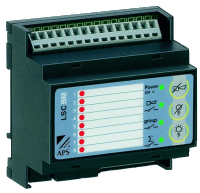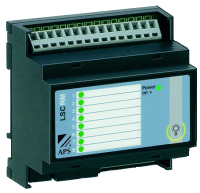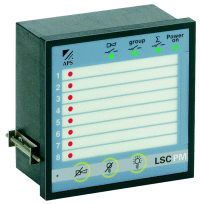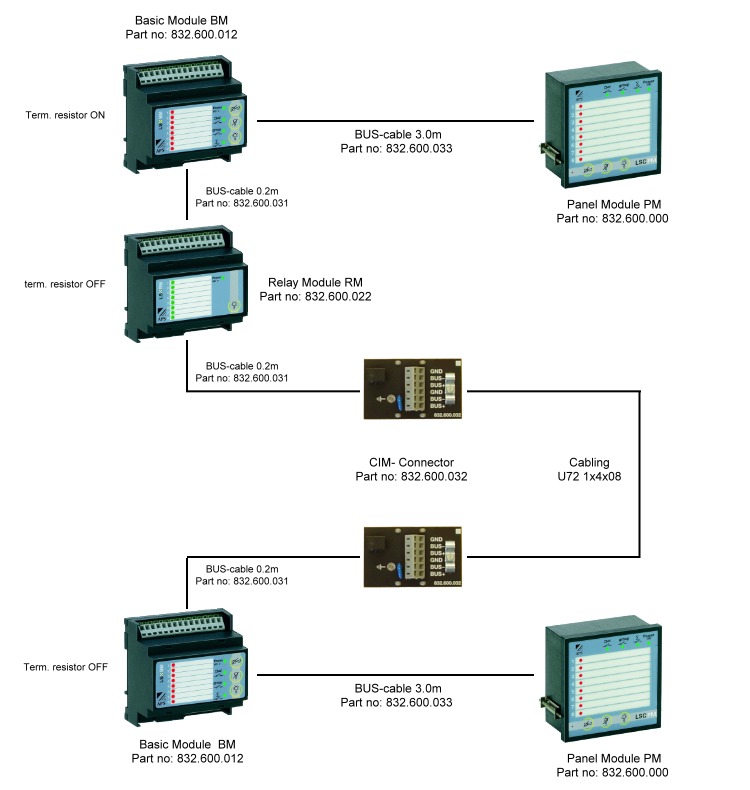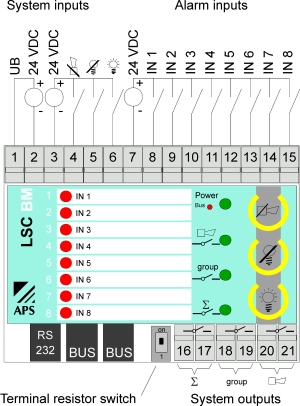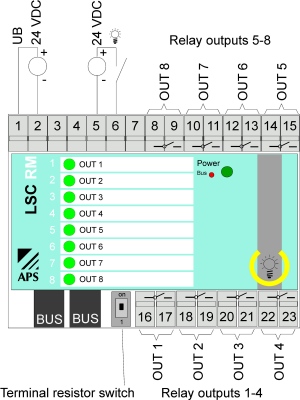The LSC is supplied as ready for operation in stand alone mode. To connect it to other modules, and to set up all parameters such as delay times, output configuration, etc., terminal software has also been provided. This software enables you to create, transfer and save all programmes with minimum fuss.
View of the programming software: General configuration BM
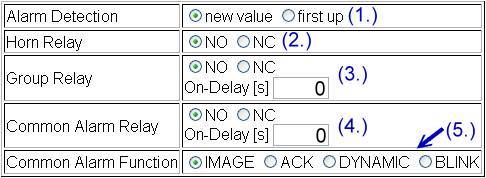
(1.) Alarm sequence new value up or first value up
(2.) Horn relay normally open (NO) or normally closed (NC)
(3.) Group relay normally open (NO) or normally closed (NC) and on delay in seconds
(4.) Common alarm relay normally open (NO) or normally closed (NC) and on delay in seconds
(5.) Common alarm relay function:
IMAGE (static)
The common alarm relay is activated by the first alarm and becomes inactive again when no further alarm conditions exist.
ACK (static until LQ)
The common alarm relay is activated by the first arriving alarm and becomes inactive again after the lamp acknowledgement. On the arrival of further alarms the collective alarm relay becomes active until the next lamp acknowledgement.
DYNAMIC
For each alarm arriving the common alarm relay becomes active in the cycle of the blinking frequency, until the lamp acknowledgement. On the arrival of further alarms the collective relay actively blinks again until the next lamp acknowledgement.
BLINK (dynamic/static)
The same functioning as for the common alarm DYNAMIC, but the relay remains statically active after the lamp acknowledgement until no further alarm conditions exist.
View of the programming software: Inputs BM
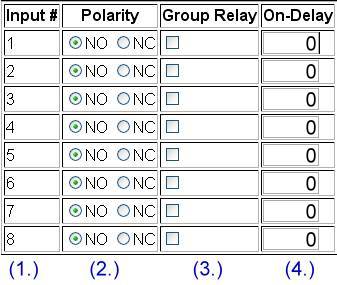
(1.) Inputs 1 to 8 of the BM
(2.) Input normally open (NO) or normally closed (NC)
(3.) Activation of the group relay of the BM
(4.) Input on delay in seconds
View of the programming software: Outputs RM
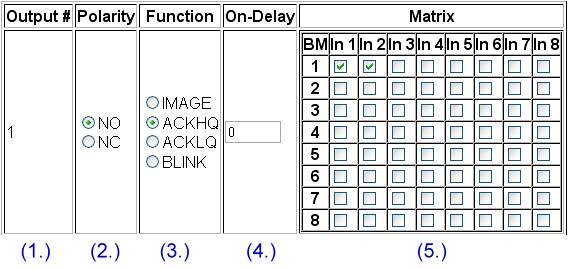
(1.) Outputs 1 to 8 of the RM
(2.) Output normally open (NO) or normally closed (NC)
(3.) Output function
IMAGE (static)
Image of the alarm linkage. The relay becomes statically active by the first alarm condition originating from the linkage. The relay output is reset when no more alarm conditions exist.
ACKHQ (static until HQ)
The relay is statically activated by the alarm linkage until the horn annunciator has been acknowledged.
ACKLQ (static until LQ)
The relay remains statically active due to the alarm linkage until the lamp acknowledgement has been activated.
BLINK (dynamic/static)
The relay remains set in blinking mode whilst alarm conditions are communicated via the linkage. After acknowledgement of the alarms the relay remains statically active until no more alarm conditions are communicated via the linkage.
(4.) Output on delay in seconds
(5.) Matrix to choose which input activates the output
 Description
Description Technical data
Technical data Schematic
Schematic Programming
Programming Order overveiw
Order overveiw Downloads
Downloads Description
Description Technical data
Technical data Schematic
Schematic Programming
Programming Order overveiw
Order overveiw Downloads
Downloads Important information about the LSC
Important information about the LSC